Contents
Radish is the most unpretentious vegetable crop. Many gardeners grow it on their plots, as the vegetable has not only an excellent, slightly spicy taste, but also healing properties. Even our ancestors used root crops to treat diseases, strengthen immunity, and even now it can be found in some herbal preparations. Growing radish in the garden is a simple and not troublesome process, and the benefits of a vegetable are invaluable. About when to plant a radish in open ground, and how to do it correctly will be described in this article.
When to plant in the ground
Radish belongs to cold-resistant plants – its seeds germinate without problems at a temperature of +3–5 ° C, and seedlings are able to tolerate temperatures as low as +3–4 ° C, and even short-term night frosts, which often occur in spring. Therefore, the answer to the question “when to plant a radish in open ground” is unequivocal: as soon as the snow melts and the soil warms up to the above temperature.
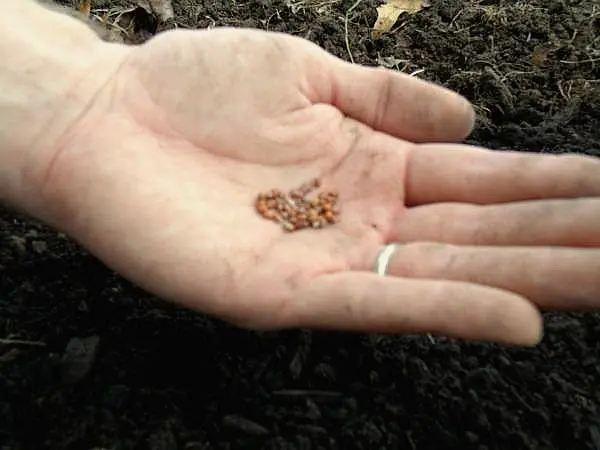
Seeds of summer varieties are recommended to be sown in spring, from late April to late May. Early varieties are more resistant to cold, so they can be sown in the last decade of April. Varieties of medium maturity are sown in May. The most comfortable temperature for growing radish is +18–20 °C. It is desirable that such a degree be established approximately 1–1,5 weeks after germination. Based on this information, it is easier to calculate the most successful landing dates.
Winter radish is grown for autumn and winter consumption. The time range from mid-June to mid-July is considered optimal for its sowing, but it is necessary to take into account the characteristics of each variety. The average ripening period of winter root crops is 100-110 days. Knowing the peculiarities of the climate of your region, it will not be difficult to calculate the most appropriate time for sowing a winter crop. To determine the planting date more accurately, gardeners use the lunar calendar – a radish planted with a waning moon grows faster and better.
soil
Radish is not very demanding on the soil, but the yield and taste of root crops largely depend on its composition. The best soil for radish is fertile, rich in humus and humus loam, or sandy loam soil. For successful growth, root crops need constant but moderate humidity, as well as neutral or slightly alkaline soil acidity. If the soil in your area is acidic, then it must be limed.
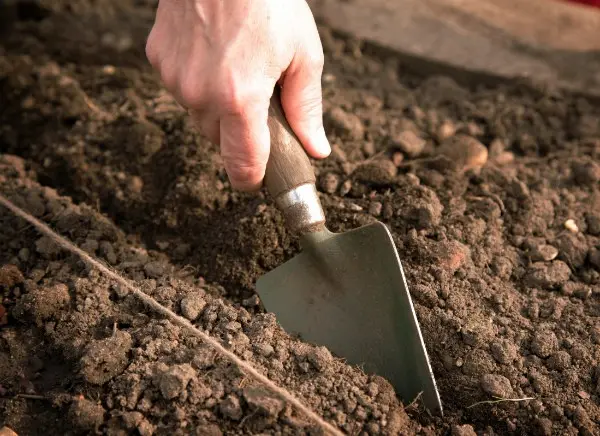
Radish is grown from seeds that are sown in the soil prepared in advance. Since it is customary to plant summer varieties of radish very early, the preparation of the beds is carried out in the fall. The site is dug up to a depth of 15–20 cm, all excess debris (roots, weeds, stones, lumps) is removed, organic fertilizers are applied at the rate of 1 bucket of compost or humus and 1 glass of ash for every 1 m². Fertilizers are mixed with the soil, the site is leveled and left until spring.
Если редьку предполагается высадить на участке, где в минувшем году или 2 года назад вносились органические удобрения, то достаточно только перекопать почву, и внести немного минеральной смеси (30–40 г суперфосфата, 25–30 г селитры) – органику больше вносить не нужно. Желательно обратить внимание на предшественников и соседей редьки. Не следует ее высевать после любых крестоцветных культур, хрена, моркови.
Beans, tomatoes, cucumbers, zucchini, corn are considered successful predecessors for the crop. The peas planted nearby, as well as any pumpkin crops, have a beneficial effect on the radish.
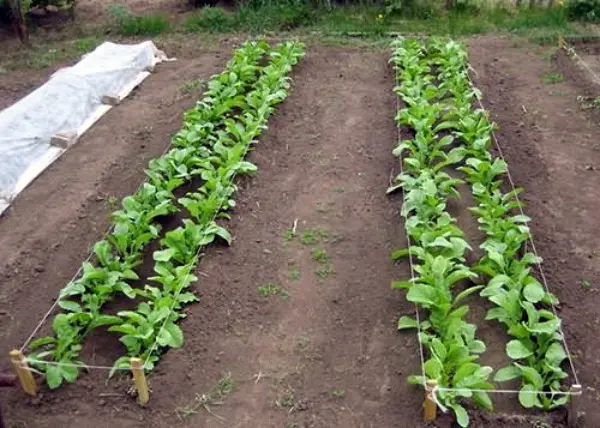
How to plant in open ground
Before planting seeds in the ground, they must be calibrated and prepared. For planting, the largest (2 mm) specimens are selected, soaked for a day in a solution of potassium permanganate or saline (50 g / 1 liter of water). Then they are laid out on a cloth or paper, slightly dried, after which they can be sown in the ground.
The bed prepared in advance is slightly loosened and furrows are made 2–3 cm deep at a distance of 25–30 cm. 15-20 pieces at a distance of 3-4 cm, after which the furrows are covered with earth. If the ground was not moist before planting, then the rows must be watered.
Some gardeners plant radishes in single nests along the edges of the beds or between cucumbers, pumpkins until they unravel – this planting option is also possible. In about a week, the first shoots will appear. When the sprouts form two true leaves, the nests are thinned out, leaving one of the strongest sprouts. The soil between the rows is loosened and weeded, and the row is lightly spudded.
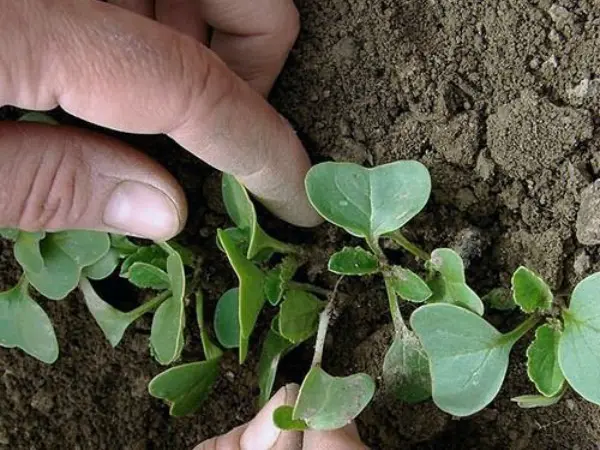
Посадка зимних сортов
Growing winter radish is a great opportunity to consume this wonderful product throughout the winter. Mature root crops normally tolerate frosts on the surface and sub-zero temperatures down to -5–6 ° C. This resistance of the crop to cold allows you to collect a late harvest, and thereby extend its safety. In addition, winter varieties have many advantages over summer radishes – they are less susceptible to damage and rot, winter roots are more healing, and also differ in rather large sizes (300–600 g).
Winter radish should be sown using the same technology as summer radish, however, there are some features that affect the yield and size of root crops:
- a plot for winter radish should be prepared in the spring;
- the distance between nests with seeds should be increased to 15-20 cm, taking into account the size of the root crops.
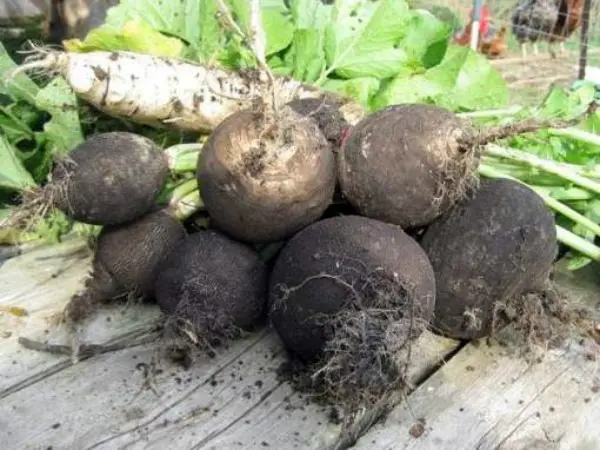
It has already been said about when to sow winter varieties, but it should be noted that these are average terms that may vary depending on the climate and varietal characteristics.
In temperate and southern climates, it is better to plant seeds from mid-July, as winter comes later in these regions, and the plants may have time to shoot arrows. Where the summer is not hot, and frosts come earlier, you can sow in the second half of June. For early ripening varieties, the beginning of August will be the optimal time, but later than this date, sowing should not be carried out, since the root crops will not have time to ripen and gain the desired weight.
Зимние сорта менее требовательны к уходу. Они не нуждаются в обильном поливе – в течение сезона достаточно увлажнить грядку 3–4 раза, и то если отсутствуют дожди. Вредные насекомые, как правило, в это время уже не активны, поэтому необходимости в обработке растений нет. Подкармливают зимнюю редьку небольшими дозами минеральных удобрений, но за 3–4 недели подкормки следует прекратить. Чтобы избежать накопления нитратов, можно использовать посыпку или раствор золы. Зимняя редька дает высокие урожаи – если с летней грядки удается собрать 20–30 кг с 10 квадратов площади, то при выращивании зимних сортов урожайность увеличивается до 40–60 кг с 10 квадратных метров грядки.
Video “Sowing radish in the ground”
From this video you will learn how to properly and in what time frame you need to sow root seeds in open ground.










